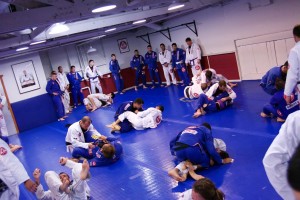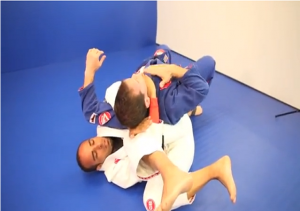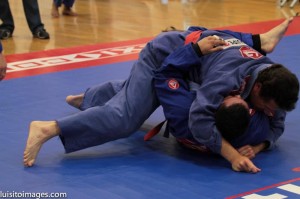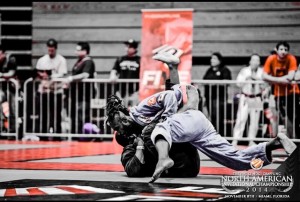Advice for New Students on How to Roll
For the new student to brazilian jiu-jitsu, starting to spar can be an overwhelming experience. Trapped on the bottom, an opponent’s weight pinning you to the mat and defending a multitude of submissions is an entirely new experience for most people.
Starting to roll too early is not the most productive. Unless you understand the positional hierarchy (best to worst positions) and have some notion of what you are trying to do in each of the major positions, you are forced to rely on instinct, strength and speed for survival.
The Positional Hierarchy:
Rear mount (best)
Mount
Knee on Belly
Side control
 Half Mount
Half Mount
Guard Top / Guard Bottom
Turtle Top / Turtle Bottom
Half Guard Bottom
Side control Bottom
Knee on Belly Bottom
Mount Bottom
Rear mount Bottom (worst)
Here are nine tips to use in your early rolling sessions:
1) Nowhere in this article will you find the advice to use all of your strength and try to explode out of every position to prove how long you can survive before being tapped!
 Don’t try to use 100% of your strength.
Don’t try to use 100% of your strength.
Imagine learning boxing sparring and trying to knock out your training partner with every punch. The trainer (likely a former pro boxer) will up the intensity at their end and you will soon be looking up at the lights overhead from your prone position on the canvas!
Look for a technical solution to escape inferior positions.
2) Instead of trying to apply submissions from inferior positions (ex. trying to americana your opponent from inside their guard) your focus should be on defense, escapes and improving your positions.
Remember this bjj wisdom: Position before submission!
 3) Don’t grab fingers to defend chokes. If you break someone’s fingers, they can’t go to work the next day and you have injured their ability to earn their livelihood.
3) Don’t grab fingers to defend chokes. If you break someone’s fingers, they can’t go to work the next day and you have injured their ability to earn their livelihood.
4) Don’t give your back when on the bottom. It is your instinct, but you are putting yourself in the worst position to be in on the ground. Learn how to replace the guard as one of your earliest priorities.
5) Don’t push hard to defend on bottom. You only offer your straightened arms up for armbars and tire your muscles with unproductive pushing. Ask your instructor for the technical way to escape.
 6) Tap before something cracks or pops. Don’t get in injured just as you are starting to make progress in your jiu-jitsu. Keep in mind that rolling should be about training the techniques you have learned in class. It is not a test of your toughness. Everyone taps and it is a part of learning.
6) Tap before something cracks or pops. Don’t get in injured just as you are starting to make progress in your jiu-jitsu. Keep in mind that rolling should be about training the techniques you have learned in class. It is not a test of your toughness. Everyone taps and it is a part of learning.
7) Start to learn some standup takedown techniques from the beginning and start a few matches from standing. There are few sights more sad than a bjj guy with a few years of experience with zero takedowns.
 8) Be aware of other rolling pairs. It is possible to get too involved in your own battle and end op crashing into another pair rolling near you. Do you feel your foot kicking something covered in gi? That is another person! You have to be aware of your surroundings and keep your training partners safe.
8) Be aware of other rolling pairs. It is possible to get too involved in your own battle and end op crashing into another pair rolling near you. Do you feel your foot kicking something covered in gi? That is another person! You have to be aware of your surroundings and keep your training partners safe.
9) * Most important: Try to use the techniques that you have learned in class – not just whatever thrashing movements seem like they will enable you to survive for 30 more seconds.
Gracie Barra Black belt based in Taipei, Taiwan
Twitter: @MarkMullenBJJ

